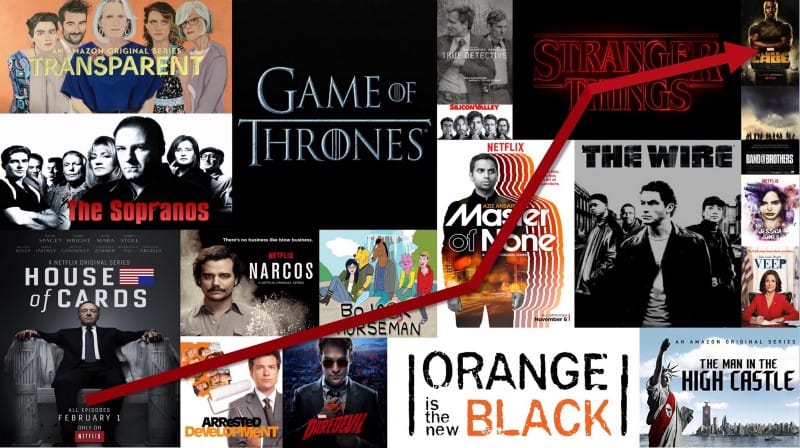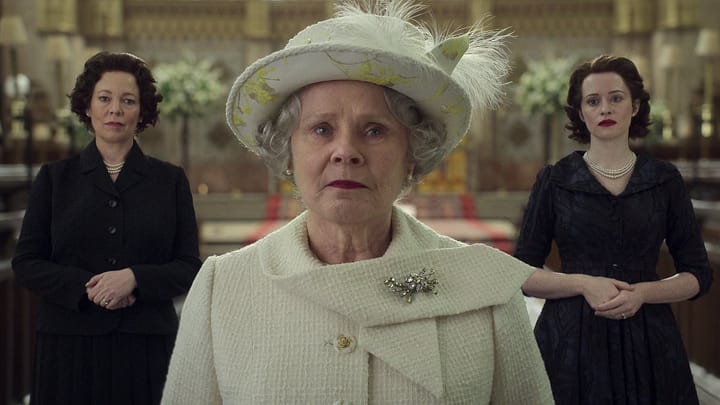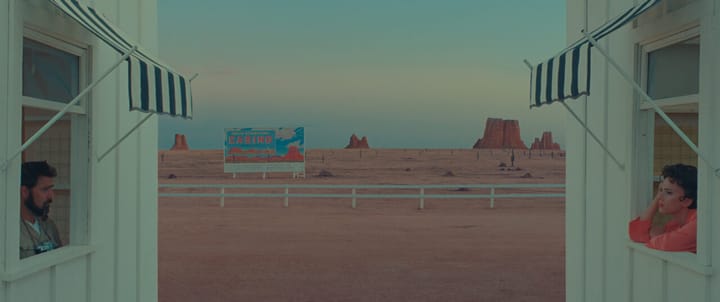The Peak Keeps Growing

What if you were scaling Mount Everest, making it from one stage to the next, knowing you were close to the summit? You keep going and going, until you realize you should be at the peak by now. Except you look up to suddenly find the peak has risen far into the clouds and now you can’t see it any more.
That’s what the current TV landscape feels like right now. We’ve been told multiple times over the years, even expecting, a crash in the TV landscape was coming. Except it hasn’t. And now it doesn’t feel like the end is coming any time soon.
We are currently in the Golden Age of Television, or ‘Peak TV’. A time of unparalleled quantity of high quality programing in the history of the medium of TV. Starting about two decades ago, it gained steam in the late aughts, even as many thought it couldn’t sustain. But it has done the opposite — only continued to expand. Expand so much, it defies the tried and true notion of grabbing the most eyeballs as possible. As it grows, and the production budgets along with it, its audiences shrink. Not because people aren’t tuning in but because it continues to fill in the gaps of every niche possible.
I feel very lucky and think it is eminently cool to live through a peak ‘era’ of anything good and grand. That doesn’t happen often, especially realizing the rarified time while living through it.
TV has become THE battle ground for entertainment. With many new and non-traditional entrants, which has lead to an influx of talent and money, raising it from the minor leagues of pop culture and professional relevance to having an artistic and influential cache of once reversed only for film.
This radical change in TV means we are seeing a multiude of stories that would not have been told in the past, by many people people who would not have their stories even considered This has lead to an endless choice of shows that fit just your particular whims. It changes the paradigm of how shows are chosen, what success means, and how the audience consumes and engages.
When the rush for scripted content blew open in the early part of the decade, every new show felt like can’t miss TV. Then the quality programming kept coming. And for the first time, as hard as you might try, you realized you couldn’t watch everything. We started prioritizing our watch list, even of hot new shows.
Then came Netflix streaming, which changed the paradigm again, by allowing us to catch up on all the shows we missed because of scheduled TV. Now we can binge a show and catch up while it was still airing new episodes and be apart of the conversation. No show exhibited this more than Breaking Bad, which the creator Vince Gillian credited Netflix for turning his show in a cultural phenomenon.
But the shows kept coming, soon even from Netflix, which changed the paradigm again with their budgets and ability to draw high profile creators, even from the film world, to make shows for them. This was once only HBO territory, but now the table stakes in this new TV frontier.
But their business model of a monthly fee to watch all their content changed how shows were judged. Metrics are still important, but they have different metrics than just pure views. Netflix, and now consequently all others, are judged as a whole, based on personal preference. Do they have enough shows that YOU like?
The success of Netflix created a flood of new money and entrants looking to cash in — Amazon, Hulu, Apple, Disney, AT&T to name a few. Everyone wants to be in the TV business, but each having to find their unique type of content. With the list of services with exclusive content continuing to grow, we the audience, now need to start making decisions about how many service we want to subscribe to and which ones.
What once seemed like an insatiable need that couldn’t be filled, is now an endless buffet that makes us feel fat, bloated, and dizzy with indecision. But with all these new companies looking to get a piece of our attention, or at least our wallet, we are learning to go on a diet. The main entry is still currently Netflix, with a side of Amazon Prime Video, and now a choice of desert. But will our tastes change over the next year or two? Will we be willing to miss out on a hot show because we don’t have that service? Will we service hop more? These and many more questions contiune to grow.
We can’t see the end of the peak any more, which leaves a lot of unknown. But in the moment, this is a good thing. While this all gets sorted out, we can look forward to an indefinite amount of great new content that continues to expand in scale and scope, never thought possible for the small screens.
We’ll reach that summit at some point, but until then, it’s great time to live in the Era of Peak TV.





Comments ()